The Aspire Tigon AIO kit is the latest pod system to come from Shenzhen based manufacturer Aspire.
Earlier in the year they presented us with the original and popular Tigon – the Aspire Breeze NXT pod kit, and more recently the Mulus AIO which I enjoyed using.
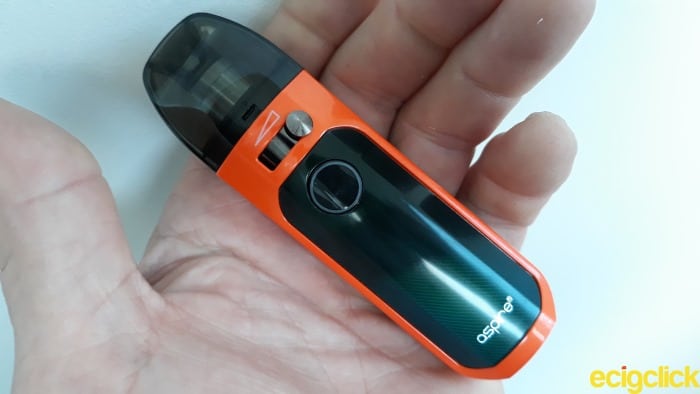
It featured both MTL and DTL options in a bid to offer complete versatility among new and seasoned vapers alike.
The Tigon AIO features one of its coils along with another I’ve yet to try.
What Can We Expect From The Aspire Tigon AIO?
It’s come to the stage where pod based systems are ten a penny.
It really doesn’t matter if they are dedicated devices or all in one systems.
There now needs to be more innovation in order to compete.
Just how much further we can go with them is open to debate.
The Aspire Mulus AIO shows that, if anyone can innovate, Aspire can.
Both included coils suggest that this device is going to be more suited to a direct to lung experience and features an internal battery that is likely to hold up for around a day.
Including a unique front slider mechanic for airflow adjustment and a rotate to release pod system, does the Tigon AIO deliver the goods?
This device was sent to me for the purpose of this review and as always my thoughts and opinions are my own.
BTW – a Tigon is the offspring of a male tiger and obviously a female lion!
So has this one got me purring or roaring?
Note: at the time of writing the Aspire Tigon AIO is on pre-order.
Inside The Box
- Tigon AIO battery unit (1300mah)
- Tigon AIO pod (4.6ml capacity)
- 0.4ohm Tigon plug and play coil
- 0.7ohm Tigon mesh plug and play coil
- Type C USB charging cable
- User manual
- Warranty card
Specifications
The Aspire Tigon AIO comes in a choice of four colour schemes: Black, White, Red and the one currently under review, Orange.
The review is also based on the non TPD compliant version featuring a 4.6ml capacity pod.
The only difference with the TPD version is the inclusion of the 2ml pod.
- Pod capacity 4.6ml
- Built in battery capacity 1300mah
- Dimensions 31.5x24x109.5mm
- Airflow adjustable on surface
- Tigon 0.4ohm coil nichrome rated 23-28W
- Tigon 0.7ohm coil kanthal AF mesh rated 20-25W
- Bottom fill pod
- Bypass output mode
- Output voltage 3.3-4.2V
Aspire Tigon AIO – Key Features
As well as the Tigon coils being plug and play there’s a locking port on the pod chamber.
It’s designed to prevent juice leaking regardless of current fill levels.
Apparently this is the first time Aspire have employed it.
The pod itself is made from high impact poly-carbonate and capable of rolling with any blows thrown at it.
A bayonet twist-lock design has been incorporated that connects the pod to the battery.
It’s such an easy system that apparently it can be done one handed.

..Gonna be trying that out lol!
The Aspire AIO features a sliding airflow pin as opposed to the traditional airflow ring.
This has been designed with ease of access in mind.
The outer ring of the fire button features three colour phase illuminations depending on current battery strength.
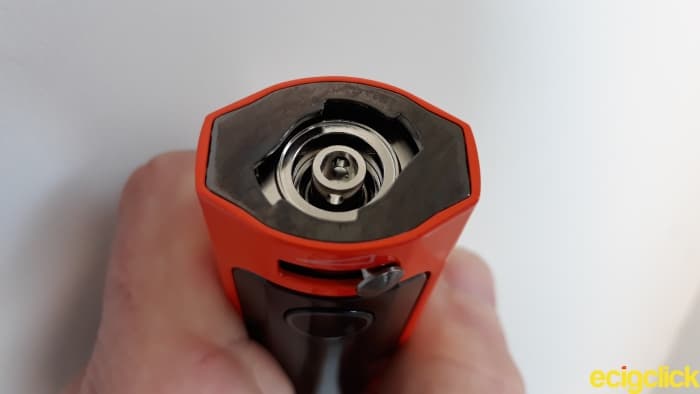
Design and Build Quality
Battery Section
At first glance the Aspire Tigon AIO looks and feels to be constructed of cast iron.
I would imagine that it’s actually zinc alloy but has a tougher, more durable feel when held.
There’s almost a spray painted appearance to the main body.
The orange version is a colour very much associated with the Aspire brand.
It’s kind of a nod to their own heritage. Nice touch.
Two panel inlays either side of the battery display a dark green aura against a carbon fibre style backdrop.
Good to see the type C charging port placed in a sensible position. It’s made even more effective by the flat base of the battery.
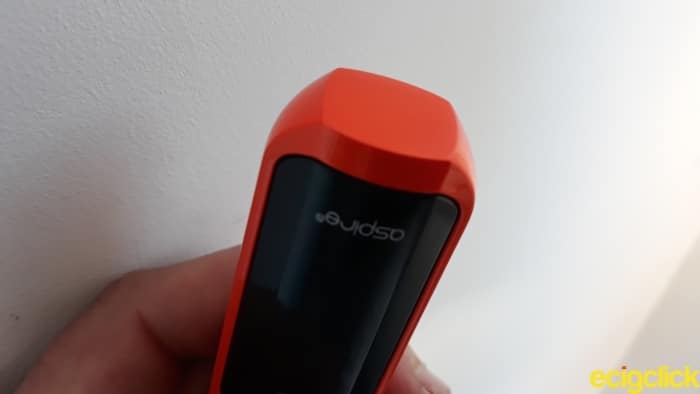
Now we move onto what I personally consider the worst design feature to appear on a pod based system.
Aspire Tigon AIO – Airflow Adjustment Slider
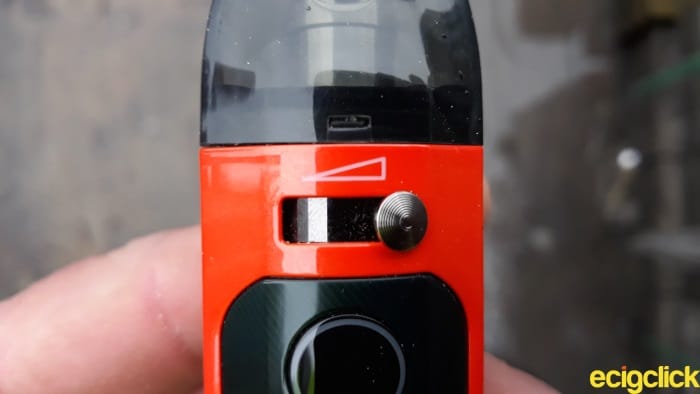
What? When? Why?!!
When I first opened the box the word “nail” sprang to mind, closely followed by “Rivet” throwing me completely off guard lol!
Instead of being easy on the eye, I’m constantly drawn to it.
It’s also quite sharp, cumbersome and stiff to make adjustments with.
It’s a Negative Neil moment, unfortunately.
Aspire Tigon AIO – Fire Button
There’s a very solid feel to the fire button and response times are very good for a pod based system, overall.
The battery status light around the perimeter is bright and visible.
However, it does suffer in direct sunlight.
I’ve got chunky thumbs but was still able to regularly view it.
Aspire Tigon AIO – Pod Section
As previously mentioned the pod is made of a highly durable poly-carbonate.
The mouthpiece is rounded providing a comfortable vape.
Aspire refer to the shape as their Venturi airflow system.
I found it awkward at times to view juice levels through the tinted window, having to tilt the pod is something of an annoyance.
Connecting the pod to the battery section is relatively straightforward.
Attach by pushing down and rotating anti clockwise until the pod locks into place.
…By the way! I had zero luck attempting to connect the pod with one hand.
If you decide to purchase please let me know if you have more success lol!
How To Operate The Aspire Tigon AIO
Pressing the fire button five times will turn the device on.
This will be indicated by the LED flashing three times in succession.
The same applies when you power the device down.
When the device is in use, the colour of the LED will determine the current strength of the battery.
- Green (60-100%) above 3.8V
- Blue (30-60%) between 3.5V – 3.8V
- Red (0-30%) below 3.5V
Fifteen red flashes from the LED means that protective features have been applied.
Yes! It’s that boring stage of the review!
It also happens to be pretty important info for the virgin vaper that may be reading.
Skip at your leisure, of course.
- Automatic cut off after ten seconds continuous vaping.
- Short circuit protection. If the device detects a short it will stop working. Indicated by the LED flashing purple three times in succession.
- Low voltage protection. Should the battery level drop below 3.2V the device will stop working. Indicated by the LED flashing red fifteen times.
- Overcharge protection. When the battery reaches full strength charging will cease.
- Overheat protection. If the temperature of the internal chip reaches above 75deg Celsius the device will stop working. Indicated by the LED flashing yellow for three seconds.
How Does The Aspire Tigon AIO Perform?
I carried out my first test with the 0.4ohm coil.
It was tested using Zeus Juice Peach Ice Tea, part of their Myth range.
A 50VG/50PG ratio with 0.3mg freebase nicotine.
How To Install The Coil
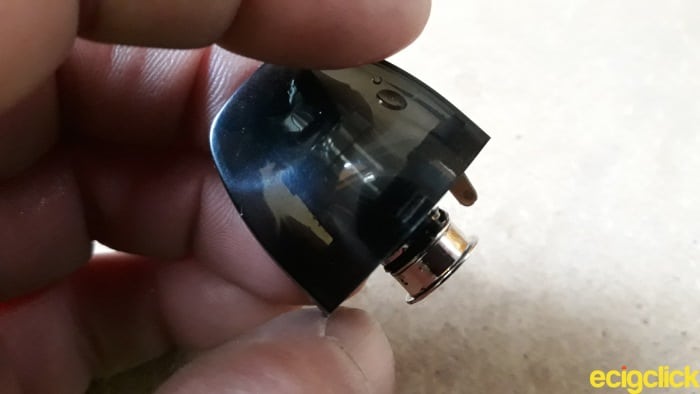
- Twist the pod clockwise to release from battery
- Invert the pod and push the coil into the chamber
- Replace the pod by aligning the catch into the groove on the top of the main body. Twist anticlockwise to connect pod.
With airflow fully open I received some excellent cloud production.
The fully charged battery was supplying the coil with some real bite.
This setting provided a very smooth and flavoursome vape yet still a semi restrictive one.
There was plenty of tasty peach coming through and held throughout the exhale.
Dialing down to a mid airflow setting saw the flavour drop enough to notice with a bit more warmth generated during inhale.
At the tightest restriction the Aspire Tigon AIO still won’t allow a mouth to lung vape. It’s just too loose.
Curiously I found the overall flavour to mimic that of a fully open draw.
How To Fill The Pod
Before moving onto the second coil, let’s take a quick look at how to fill the pod.
- Twist the pod clockwise to remove from battery
- Invert the pod and lift the silicon seal
- Apply e-liquid though the filling port
- Close the silicon seal port firmly
- Replace the pod by aligning the catch into the groove on the top of the main body. Twist anticlockwise to connect pod
I used Double Drip Raspberry Sherbet, a nicotine salt profile with a 50VG/50PG ratio to test the Tigon 0.7ohm kanthal mesh coil.
With the airflow control set wide open I got some crisp, clean flavour from this fruit profile.
There was very little turbulence with a nice all round smooth vape.
Cloud production, while not quite on par with the 0.4ohm coil was still very satisfying.
I also noticed that this was a drier vape with flavour holding well throughout the exhale.
The coil responded much better on the mid airflow setting too – the difference was instantly noticed.
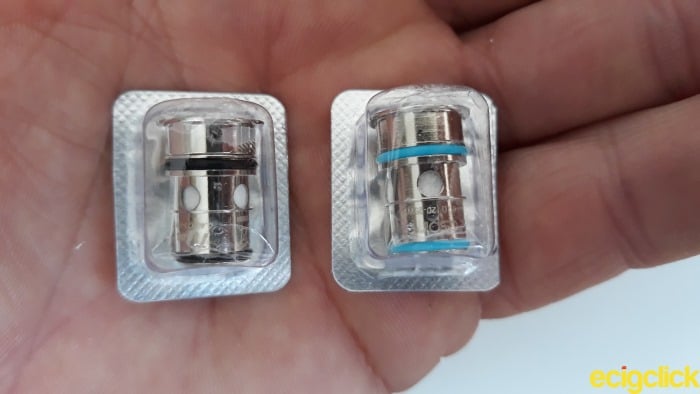
A typical restrictive lung hit of the type I favour, the sherbet content was now more present within the blend of raspberry – there was more sharpness to the flavour on the exhale.
I’m pleased to write that with full airflow restriction in place it’s possible to MTL on this device.
However, I found flavour output suffered – so did cloud production and the nicotine salt was beginning to clutch at my throat.
…Head rush, baby lol!
The overall sweetness of the juice was prevalent on this setting.
A Twist of Fate
I was able to get four and a half hours out of the battery before it fell to a level of around 60%.
A major improvement over the 0.4ohm coil.
Three hours later, while still in blue charge status the device ceased to function.
Yup! That’s right – it went the way of the dodo.
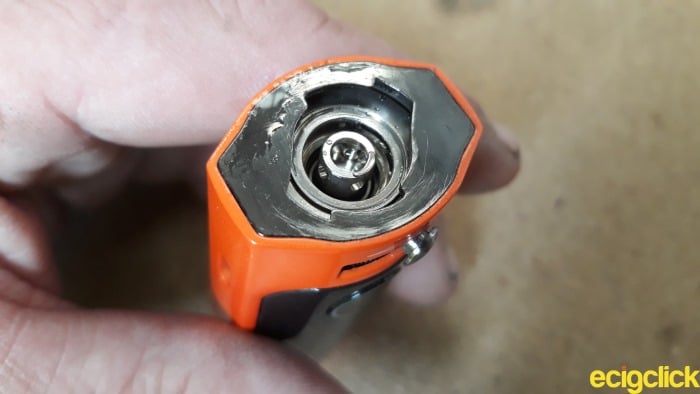
I removed the coil to check the O rings and they were fine.
I cleaned in and around all the points of contact before replacing.
The leaking continued.
I can only conclude that liquid had entered the device and made contact with the internal chipset, and this caused a short circuit.
I did manage to revive the Tigon AIO briefly but only for it to auto fire.
After ten seconds the LED flashed purple three times and that’s pretty much where my review process ended!
…At least we know the built in safety protection works.
Those features I mentioned above that you probably skipped over. lol
Pros
- Easy to swap out coils plug and play style with no juice spilled
- Fast type C charging
- Easy to charge in the vertical position
- Some excellent flavour and cloud definition from included Tigon coils
- Great battery life from the 0.7ohm Kanthal mesh coil
Cons
- It ceased to work after just five days!
- Leaks like a sieve with the included 0.7ohm Kanthal mesh coil
- The airflow control slider is atrocious
- The rear of slider can be blocked by a finger, hampering desired airflow output
- Twist and lock mechanism more cumbersome than using magnetic contacts
Final Review Verdict
Battery performance using the 0.4ohm coil was a little disappointing.
I was expecting a good few hours more than I got.
Before the device refused to play ball, the 0.7ohm coil was faring much, much better.
You’ll be looking at vaping around 8-9ml of juice between charge cycles.
I’m no longer in a position to state how long the coils will hold up.
My apologies.
The 0.7ohm mesh coil edged it for me, with its extra pop.
Cloud production was almost on par with any self respecting sub ohm tank.
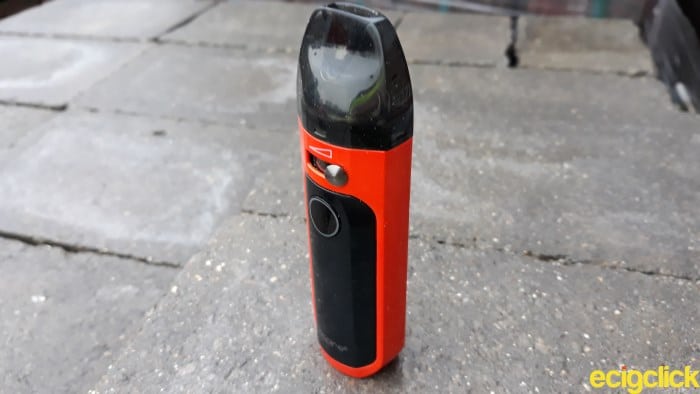
It did indeed take around an hour to fully recharge the battery from a depleted state – Type C charging working its wonders, as always.
I have to question the need for the twist and lock connecting system.
It certainly isn’t as quick and easy to use as magnetic contacts.
It feels like a gimmick, appearing cheap and tacky in execution.
The airflow control slider is abysmal in use and looks a complete eyesore.
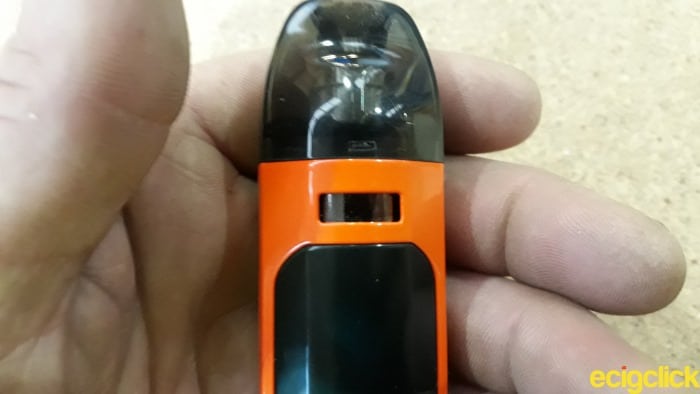
There’s a natural tendency for a finger to block the rear of the airflow control slider.
This has a very detrimental effect on performance and will severely hamper the setting you have chosen.
Would I Recommend The Aspire Tigon AIO?
Based upon my own experiences that would be a resounding “no”.
It offers nothing new to the world of pod style devices.
The airflow slider is a pain in the rear, while the rear of the device can actually hamper airflow intake.
Magnetic contacts are the tried and tested method of connection with these devices.
There’s nothing gained here by changing that system to a twist and lock style.
It easily takes twice as long to fix pod to battery so why bother?
Even for someone new to pod based systems, the Aspire Tigon AIO is one to avoid.
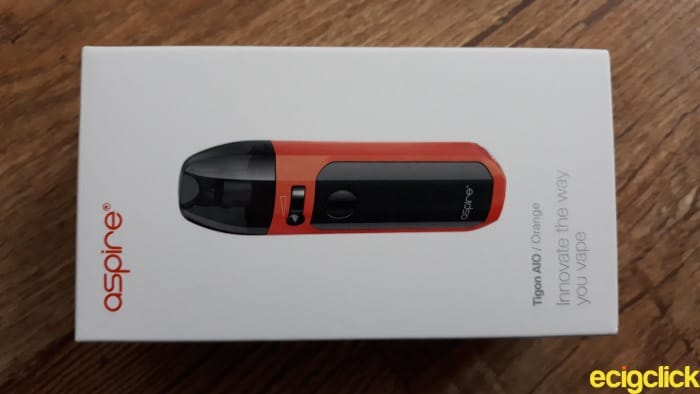
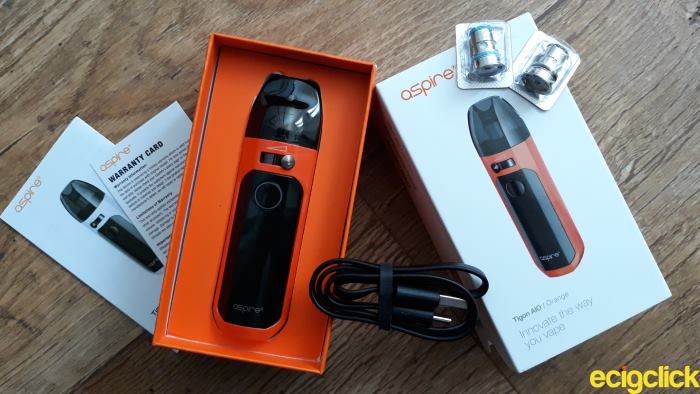
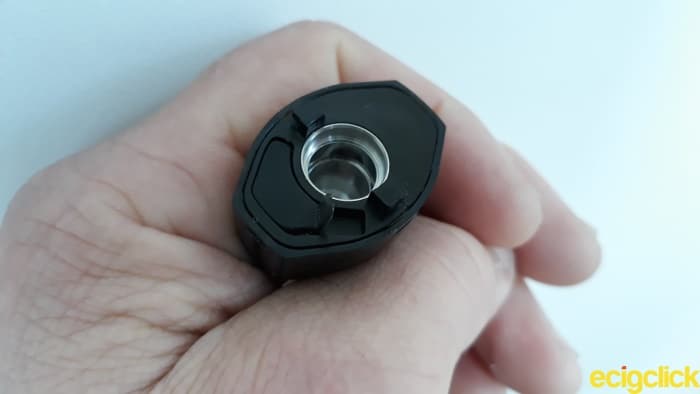
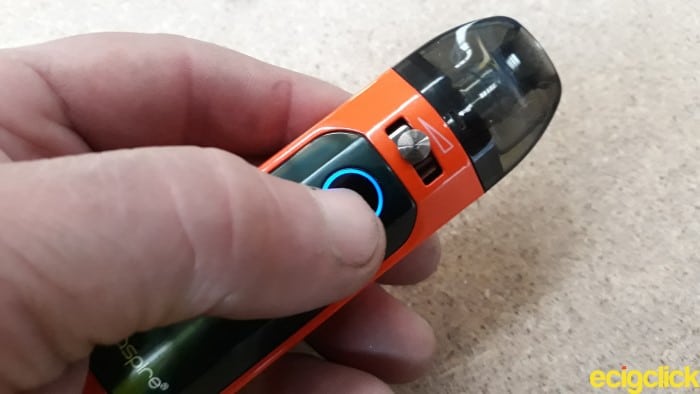
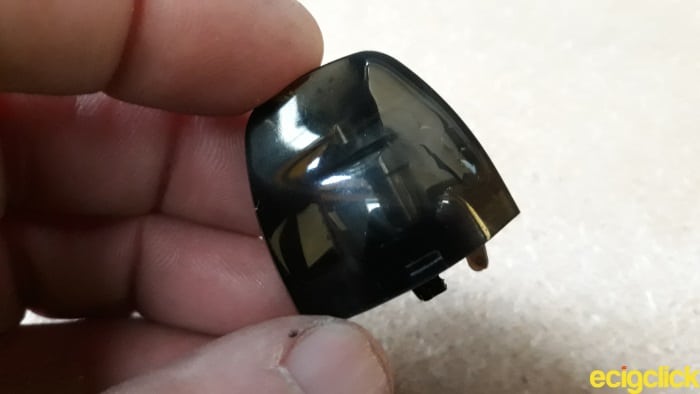
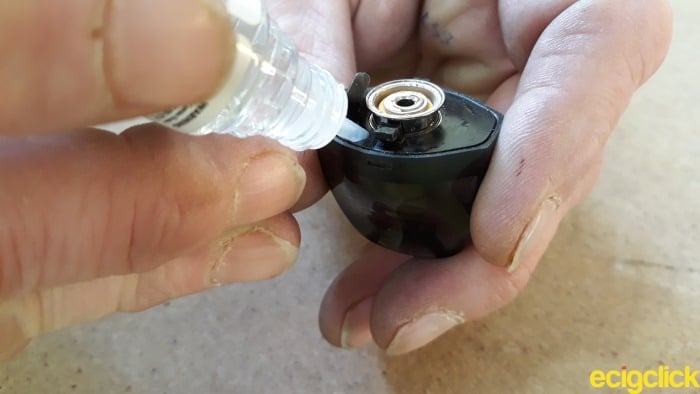
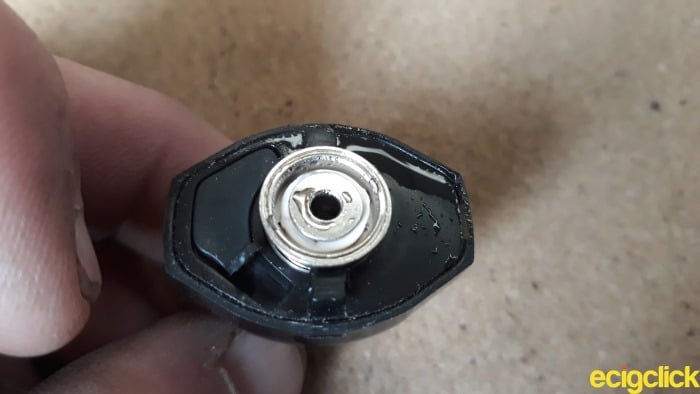
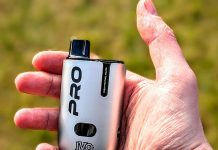
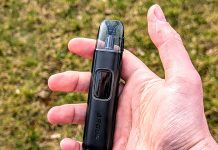
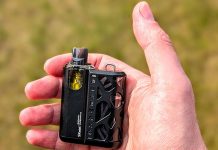
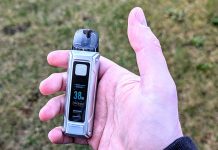

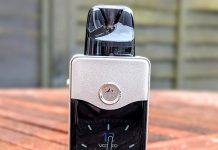
U been vaping sin e 2014 ? Yet u use 50/50 juice with a .4 and a.7 coil and u wonder why it leaks ?? Seriously ????
Wow! Seven question marks for two questions. Whenever I use a pod system that takes a single coil I tend to prefer thinner juices. Why? Because of the absorption rates a single coil can handle when dealing with an array of wicking material. Combining this with the relatively lower power requirements from the coils (in this case 28W) with a built in battery I tend to get consistent wicking and improved flavour. You’ll probably know yourself coil life span is often improved.
If I was constantly getting dry hits would you then say the juice was too thick? The same thing could equally apply.
Yes, I’ve been vaping for six years but there have been many innovative ideas during that time.
Were Mesh prebuilt coils around then? Were pod systems around then? I keep learning with an open mind and that’s one of the beauties of vaping.
..You still win the arguments ’cause you got seven question marks in against my four.
Thanks for the constructive criticism, Carly
Neil